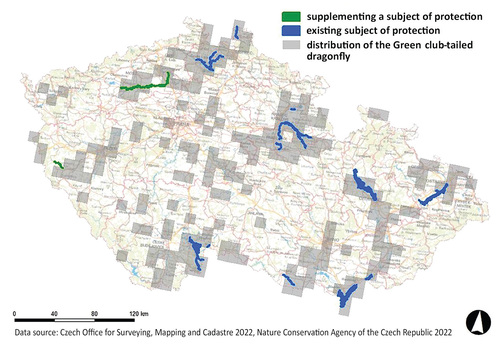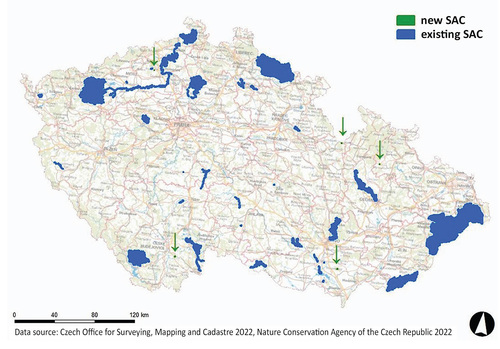Nature Conservation 2023 — 5. 6. 2023 — Nature Conservation Legislation — Print article in pdf
The Natura 2000 Network Will Again Expand in the Czech Republic
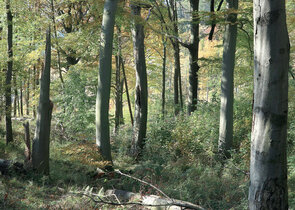
Although the first national list of Special Areas of Conservation (SAC) was adopted by the Government of the Czech Republic following the country´s accession to the European Union in 2005, the question of its representativeness for species and habitats of European importance, and therefore the sufficiency of the EU Natura 2000 network of protected areas in the Czech Republic, has not yet been closed by the European Commission. Over the course of the Natura 2000 network´s existence, the Czech Republic has tried to deal with the identified shortcomings in particular with three major additions, most recently in 2016. Nevertheless, we are now awaiting another more extensive update of the national SAC list. The proposed amendment and the reasons for its development are explained on the following pages.
Sufficiency reassessment after six years
In 2017, the European Commission commissioned a new analysis on the sufficiency of SACs in the Czech Republic, whose task was to evaluate whether sufficient and representative SACs had been declared, providing protection for individual species and habitats that are the subject of their protection. Only phenomena considered underrepresented in the most recent sufficiency assessment from 2011 were reassessed.
In general, reports on the status of species and habitats that EU Member States submit to the European Commission at six-year intervals are used for evaluation, as well as other available literature and publicly accessible documents.
In the conclusions of the assessment for the Czech Republic, 36 insufficiently represented species and habitats, or phenomena, were identified, for which there is insufficient evidence to declare the site and are thus kept as a "scientific reserve". For most phenomena, specific existing SACs or supplementary sites have been identified. There were more than 170 requests. The European Commission was led to a new assessment, inter alia, by the fact that, despite the amendment to the national list in 2016, not all of the then-historical requirements, supported by the expert data, were fulfilled.
Supplementing the national SACs list failed
By Government Regulation No. 73/2016 Gazette which amends Government Regulation No. 318/2013 Gazette on establishing a national list of Special Areas of Conservation, 50 new SACs were announced and subjects of protection were added to 70 existing SACs. In the same month as the European Commission was informed about supplementing the national list, the so-called infringement procedure were initiated against the Czech Republic regarding violation of the Treaty, or of Union law. This call did not yet take into account the supplements made; however, the European Commission had information that some sites that met the expert/technical criteria for inclusion in the Natura 2000 network would not be declared due to other interests in the area; this was Porta Bohemica (extension of the Labské údolí/Elbe River Valley SAC) and Louky u Přelouče/ Meadows near the town of Přelouč SAC (originally listed as Slavíkovy ostrovy/Slavík´´s Islands and Labišťata/Elbe River Pools sites). The Czech Republic responded to the call by including the Porta Bohemica SAC in the national list with amendment No. 207/2016 Gazette, but as you will learn further in this article, even this proposal did not fully meet the requirement for this site.
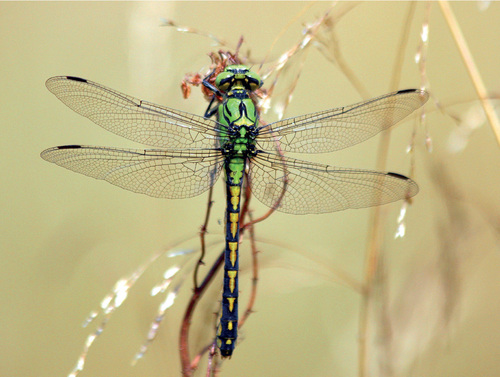
The species for which a geographical gap was identified in the Czech Republic was the Green club-tailed dragonfly (Ophiogomphus cecilia). © Jiří Neudert
Several years of negotiations with the European Commission
The conclusions of the 2017 assessment, which the Ministry of the Environment of the Czech Republic had received in 2018, were discussed at bilateral meetings with the European Commission as part of the "Nature Dialogue" process. Such negotiations would take place in all Member States in accordance with the then three-year Action Plan for Nature, People and the Economy from 2017, which included specific actions aimed at strengthening the practical implementation of the Directives and their contribution to the goals of the then EU Biodiversity Strategy until 2020.
The initial two-day meeting took place in the Czech Republic in September 2018. In addition to the topic of sufficiency and ensuring the protection of sites, issues above the network itself were also discussed with the European Commission, e.g. forest management, intensive fish farming in the landscape, and the process of permitting small hydroelectric power stations in the context of the need to preserve the ecological functions of watercourses.
Due to the extensiveness of the supplement requirements, negotiations on sufficiency continued for another round in February 2019, within which, on the basis of existing data, it was possible to confirm unambiguous cases in which the phenomenon did not meet the criteria for inclusion at the given site. The number of sites that the Commission requested to add to the network was thus reduced to approximately half. The Czech Republic also promised to start the process of supplementing Louky u Přelouče/Meadows near the town of Přelouč SAC.
Review of the Commission's requests' justification
It was also agreed at the meeting that the relevance of the remaining requirements will be verified in 2019 and 2020, as in some cases it was necessary to carry out verification in the field or to wait for the completion of the habitat mapping update at the given site. The verification, as well as the documents for all previous meetings, was provided by the Nature Conservation Agency of the Czech Republic (NCA CR). The evaluation mainly included information on the quality and size of the habitat, population size of the species, nature of occurrence (dispersed/concentrated occurrence), importance on a regional, i.e. within the respective biogeographi-cal region, and potential for the future, including the possibility of implementing management.
Figure 1: Distribution of the Green club-tailed dragonfly reported in Conservation Status Assessment (2019). SACs in which the species is the subject of protection (blue) and the proposed supplementing of the species as a subject of protection to the existing SAC in the Continental Biogeographic Region (green). The sites are enlarged for better visibility. © Tereza Kušnírová.
Figure 2: Map of SACs that are proposed for declaration (5 SACs) or supplementing the subject of protection (35 SACs) as part of the amendment preparation. Due to their small size, new sites are shown with an arrow (new sites amount to almost 31 ha). For some sites, where the subject of protection was added, the boundaries were also revised. In the map, SACs are already shown with the newly proposed boundaries. The sites are enlarged for better visibility. © Tereza Kušnírová.
NCA CR commissioned several studies, e.g. for the Green club-tailed dragonfly (Ophiogomphus cecilia), in which a geographical gap in western and central Bohemia was identified as part of the sufficiency assessment for the Continental Biogeographical Region. Based on detailed monitoring from 2019, two existing SACs with a stable population were selected from the five monitored areas to supplement the species as a subject of protection: the Radbuza River SAC and Ohře River SAC. These sites will thus ensure a geographically representative sample of the species in the network corresponding to its distribution range.
The Commission continues to conduct negotiations at two levels
A month before submission of the partial verification of the results in accordance with the schedule, at the end of 2019, the infringement procedure was moved to the next stage, which explicitly mentioned the following shortcomings: failure to declare the Louky u Přelouče/Meadows near the town of Přelouč SAC, failure to include the subject of protection of gravel-sand banks at the Porta Bohemica SAC, and failure to declare the Svatá and Prostřední vrch/Holy and Middle Hills SAC to a sufficient extent. The first two of these requirements were corrected by amending the national SAC list under No. 29/2020 Gazette. In 2020, preparations began for the expansion of the Svatá and Prostřední vrch/Holy and Middle Hills SAC, which were only accepted in 2021 by amendment No. 440/2021 Gazette; the site has a new name that better corresponds to the new geographical definition – Dambořický les/Dambořice Forest.
How extensive will the supplementing be?
The results of the review were submitted to the European Commission at the end of 2019 and in 2020. According to the evaluation from 2017, only about a quarter of the original requirements were evaluated by the NCA CR as relevant. The results were discussed at two bilateral meetings with the European Commission during 2021, at which the scope of completion was agreed upon – a total of 45 subjects of protection will be added to 32 SACs.
In October 2021, the NCA CR was commissioned by the Ministry of the Environment of the Czech Republic to prepare a proposal to amend the SAC national list. On the occasion of the "opening" of the national list, long-term deficits should also have been resolved, such as the alignment of boundaries or problematic sites in which the absence of the subject of protection has been recorded.
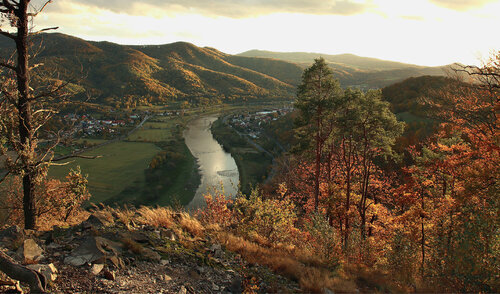
The Porta Bohemica SAC enhancing the Labské údolí/Elbe River Valley SAC was declared in 2006. © Ondřej Nitsch
How accurate are the SAC boundaries?
Historically, SACs were declared over maps that did not reach today's quality and accuracy. They were defined with the prospect of future refinement. This was governed by the then wording of the Act on Nature Conservation and Landscape Protection assuming that all Natura 2000 sites will become Specially Protected Area. The latter have currently been declared with precision on the individual plots or are directly delineated in the field, which would unify the boundaries of SACs and Specially Protected Areas. However, in 2013, basic site protection was introduced into the Act on Nature Conservation and Landscape Protection, and this assumption no longer applies to a significant number of sites.
The first large-scale review of the boundaries was undertaken as part of the SAC national list update in 2016 on the occasion of its supplementing, when it was possible to adjust the boundaries of almost 300 SACs. The primary basis for specifying the boundaries are still the declared Specially Protected Areas (especially the recent ones) and the Cadastre of Real Estate (thanks to advancing digitization); other layers are used according to the individual considerations. The prepared amendment envisages a more precise definition of the boundaries of more than 130 SACs. Mostly, it is a matter of unifying the boundaries with small-size Specially Protected Areas that were declared with the aim of protecting SACs.
Where do our subjects of protection disappear?
The NCA CR also records information on problematic sites where the subject of protection has not been recorded for a long time. However, the only argument that the European Commission accepts for the exclusion of a subject of protection is its long-term absence confirmed by monitoring, whose cause is either a scientific error (the phenomenon was included in the SAC based on insufficient or incorrect technical/expert information) or natural development (caused in particular by natural conditions), provided that measures have been implemented to prevent adverse development and it is no longer possible to restore the subject of protection at the site. Where it is possible and feasible, especially in cases where elimination could affect the sufficiency of the phenomenon, or could lead to a geographical gap in the coverage in the distribution range, it is desirable to propose a replacement SAC, otherwise the proposal for exclusion may be rejected by the European Commission.
The current amendment prepared by the NCA CR deals with the exclusion of species subjects of protection from 13 existing SACs, while six sites would see their total cancellation. Compensation is expected for some of them; it is proposed to declare three new SACs and supplement the subject of protection to two existing SACs. Problematic habitat subjects of protection will only be dealt with in the following years. The certainty of their loss is more difficult to prove; the subjective opinion of the mapper plays, inter alia, a significant role in their determination, or the observation depends on the mapping period and the climatic conditions of the given year. In this regard, ephemeral and dynamic habitats are especially problematic.
What else would be good to supplement and change?
In addition to the above-mentioned changes, the NCA CR also proposed declaring two SACs for the hornwort species, the Round notothylas (Notothylas orbicularis). The species has not been yet subject of protection at any SACs and was designated as a "scientific reserve" as part of the latest efficiency assessment. The species had been considered missing in the Czech Republic for a long time until its rediscovery (after more than 90 years) in 2010. In the following years, several specific surveys have been carried out with positive results, and the first high-quality and prospective sites could now be proposed for declaration.
Last but not least, it is proposed to expand the Kozlov–Tábor SAC for the protection of the local herb-rich beech forests, while simultaneously adding a new subject of protection of Hercynian oak-hornbeam forests with a significant occurrence in the newly supplemented parts.
On the initiative of the Regional Office of the Ústí nad Labem Region, a proposal to expand the Východní Krušnohoří/Eastern Ore Mountains SAC near the town of Horní Jiřetín was also included in the update, thanks to which the protection of acidophilous beech forests will be expanded by more than 200 ha.
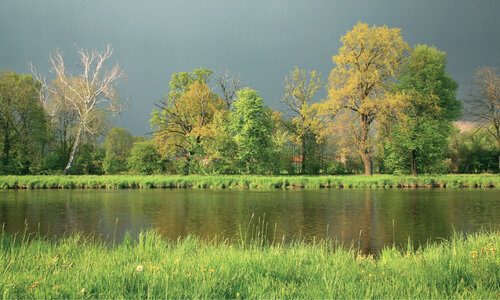
The Louky u Přelouče/Meadows near the town of Přelouč SAC was adopted by the Government in 2020. © Zuzana Růžičková
Who was the proposal discussed with?
The NCA CR and the relevant National Park Administrations have ensured that the technical/expert proposal was pre-negotiated in the first half of 2022. This is a process that is not required by legislation, but it makes it possible to inform regional authorities, municipalities, owners, and important land managers in the area about upcoming changes, to use their local knowledge to improve the quality of the proposal, and to meet their reasonable and acceptable requirements. The scope of outreach is proportional to the signi-ficance of the change in the given site: e.g. in the case of the declaration of a new site, all the mentioned entities are contacted; in the case of the alignment of the boundaries to a Specially Protected Area, only the regional authorities are informed, and the municipalities are asked to post the information on their official board.
What is the prospect of the amendment proposal?
The proposal was submitted by the NCA CR to the Ministry of the Environment of the Czech Republic at the beginning of July 2022, which will further ensure the preparation of legislative document and preliminary negotiations with other key stakeholders. An inter-sectoral comment procedure will follow and certainly long negotiations; in any case, the amendment should be completed in 2023 in order to comply with the schedule agreed with the European Commission.
If the proposal to amend the SAC national list as prepared by the NCA CR is accepted, the coverage of SACs in the Czech Republic will be expanded by almost 550 ha, which will have a minimal impact on the percentage proportion to the whole country´s territory, but the protection of species and habitats will be significantly strengthened due to the increase in their representation in the Natura 2000 network as subjects of protection. Thanks to this status, targets and protection measures will be set for them.

In 2020, the protection of natural habitat type 3270 was extended from the Labské údolí/Elbe river Valley SAC (pictured) to the Porta Bohemica SAC. © Zdeněk Patzelt
What next for SACs?
If the Czech Republic fulfils its promise to enhance the Natura 2000 network, it could be possible to close the question of the sufficiency of the Czech Natura 2000 network once and for all. However, as part of the bilateral negotiations, the topic of selecting subjects of SACs´ protection in the Czech Republic emerged. For the sufficiency analysis, available data on the occurrence of the subject phenomena in question from the then official Czech website for the Natura 2000 network were used, which included information on the occurrence of habitats for individual SAC, based on data from the first mapping of habitats, delineating those which are subject of protection. This caused a great discussion; according to the European Commission, everything that occurs "significantly" at a given site should be subject of protection. However, this approach is different from the Czech Republic procedure, which, in accordance with the criteria established by the Habitats Directive, selected the best sites for the given phenomena, which are meaningful to protect at the site, and which subsequently became the subject of protection and are targeted for protection and management. Nevertheless, thanks to extensive mapping and monitoring, it was not a problem for the Czech Republic to apply this approach. The second option, i.e. selecting sites and protecting phenomena listed in annexes to the Habitats Directive within them, is a suitable way in cases of insufficient data on the occurrence of phenomena in the country.
For the time being, everyone has to answer the question of whether it is worth protecting (and if to protect at all) each species and habitat of European importance at the site for themselves. The issue of significance and subjects of protection has now been transferred to other EU Member States as part of the currently ongoing revision of the Standard Data Form format, in which the Member States provide information on individual sites (avai-lable via the Natura 2000 Network Viewer https://natura2000.eea.europa.eu/) and within which the definition of significance and the content of reporting are now being addressed. Therefore, the activities on completing the Natura 2000 network has been ongoing yet.


